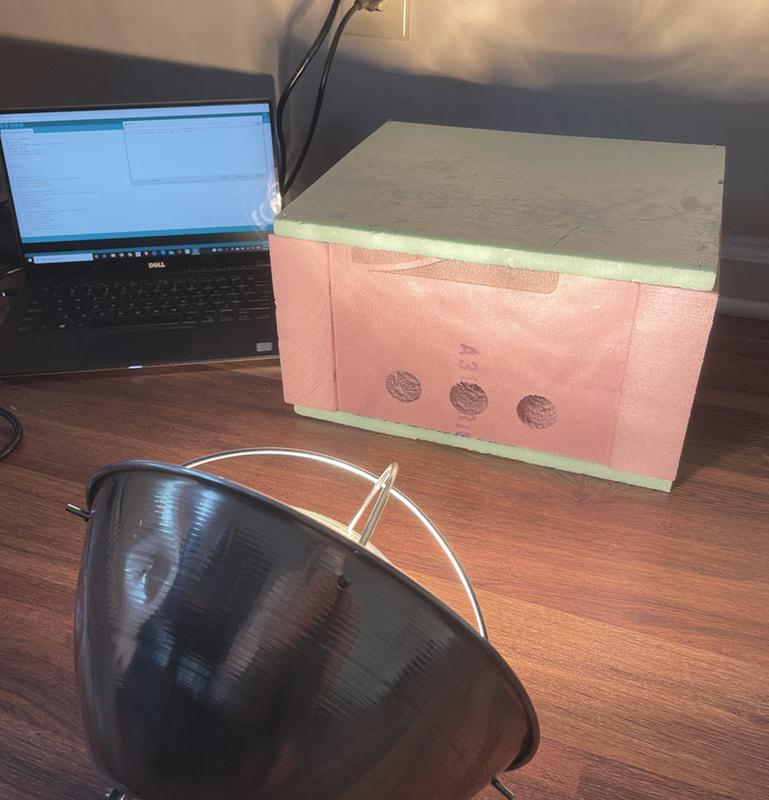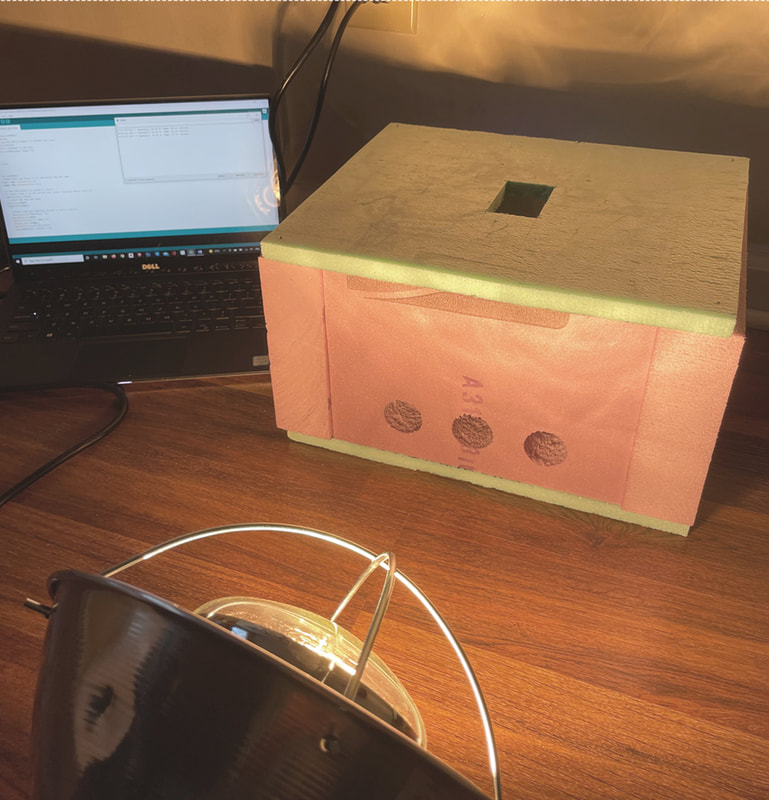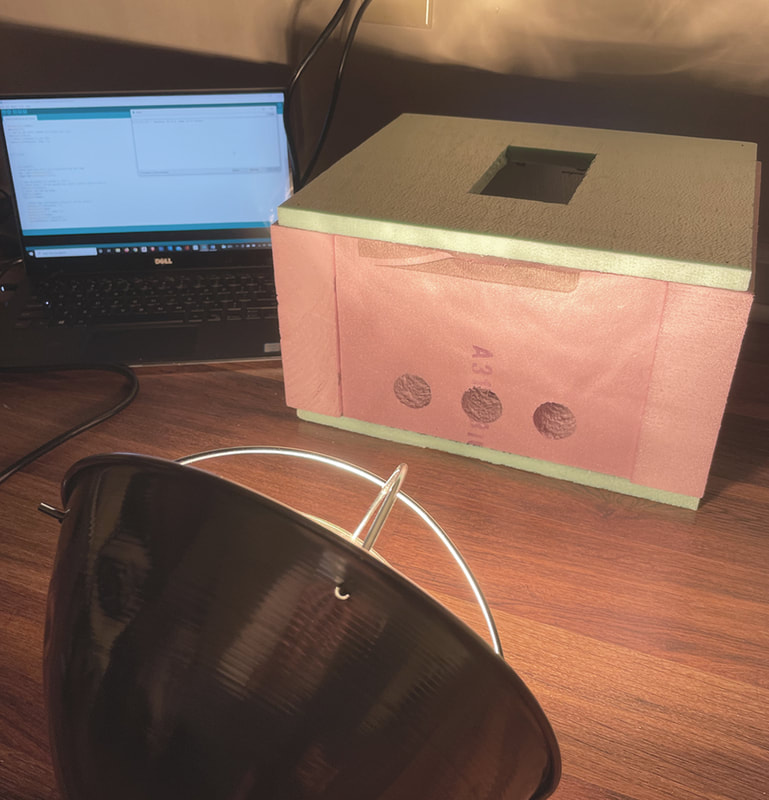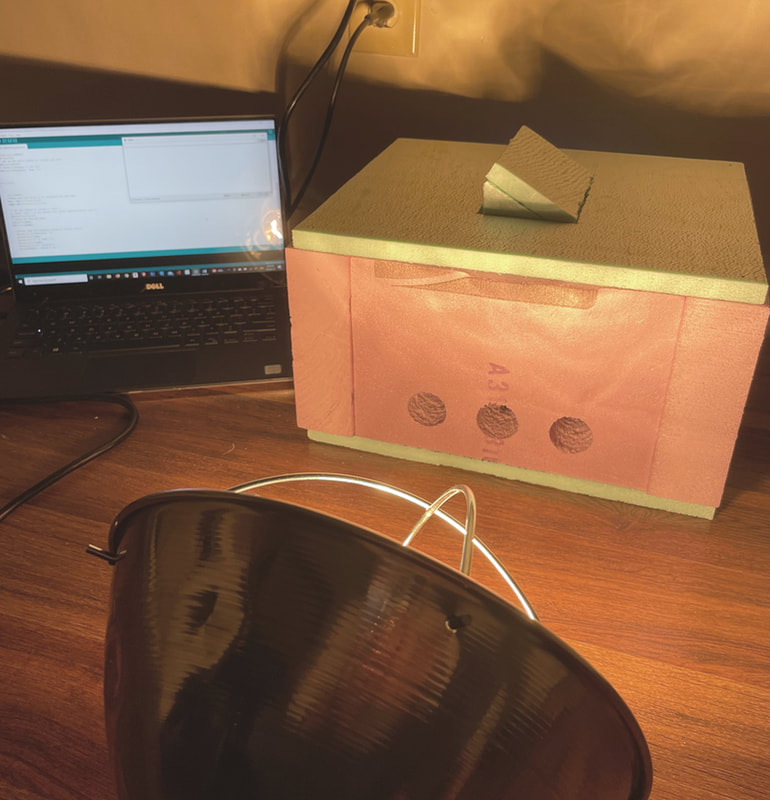Methodology
The experiment involves understanding the capacity of the windcatcher in heat reduction within the interior of a room. Therefore, similar conditions were simulated using a scaled model of a courtyard. The test box was preconditioned for 40 minutes by placing the heat source (light bulb) at an approximate distance of 1ft from the box.
During the preconditioning process, the electronic configuration and monitors were setup to be ready for data collection. The heat sensor was placed inside the box at a designated spot, by feeding it through a hole in the back panel of the box.
The main strategy to understand the effectiveness of the windcatcher on the roof is to interchange the different configurations in order to determine the ultimate winner.
During the preconditioning process, the electronic configuration and monitors were setup to be ready for data collection. The heat sensor was placed inside the box at a designated spot, by feeding it through a hole in the back panel of the box.
The main strategy to understand the effectiveness of the windcatcher on the roof is to interchange the different configurations in order to determine the ultimate winner.
Which roof form works best to reduce heat within the interiors of the space?
For the experiment, the temperature data inside the box was recorded at an interval of 5 minutes after 40 minutes of preconditioning with the heat source and the experiment with each configuration was conducted for a consistent time of 40 minutes.
The closed box and open box were considered the control setting for the minimum and maximum temperature range.
The closed box and open box were considered the control setting for the minimum and maximum temperature range.
The procedure was repeated several times until consistent temperature data was recorded. The data from Arduino IDE was transferred to MS Excel for analysis.
The procedure was repeated several times until consistent temperature data was recorded. The data from Arduino IDE was transferred to MS Excel for analysis.







